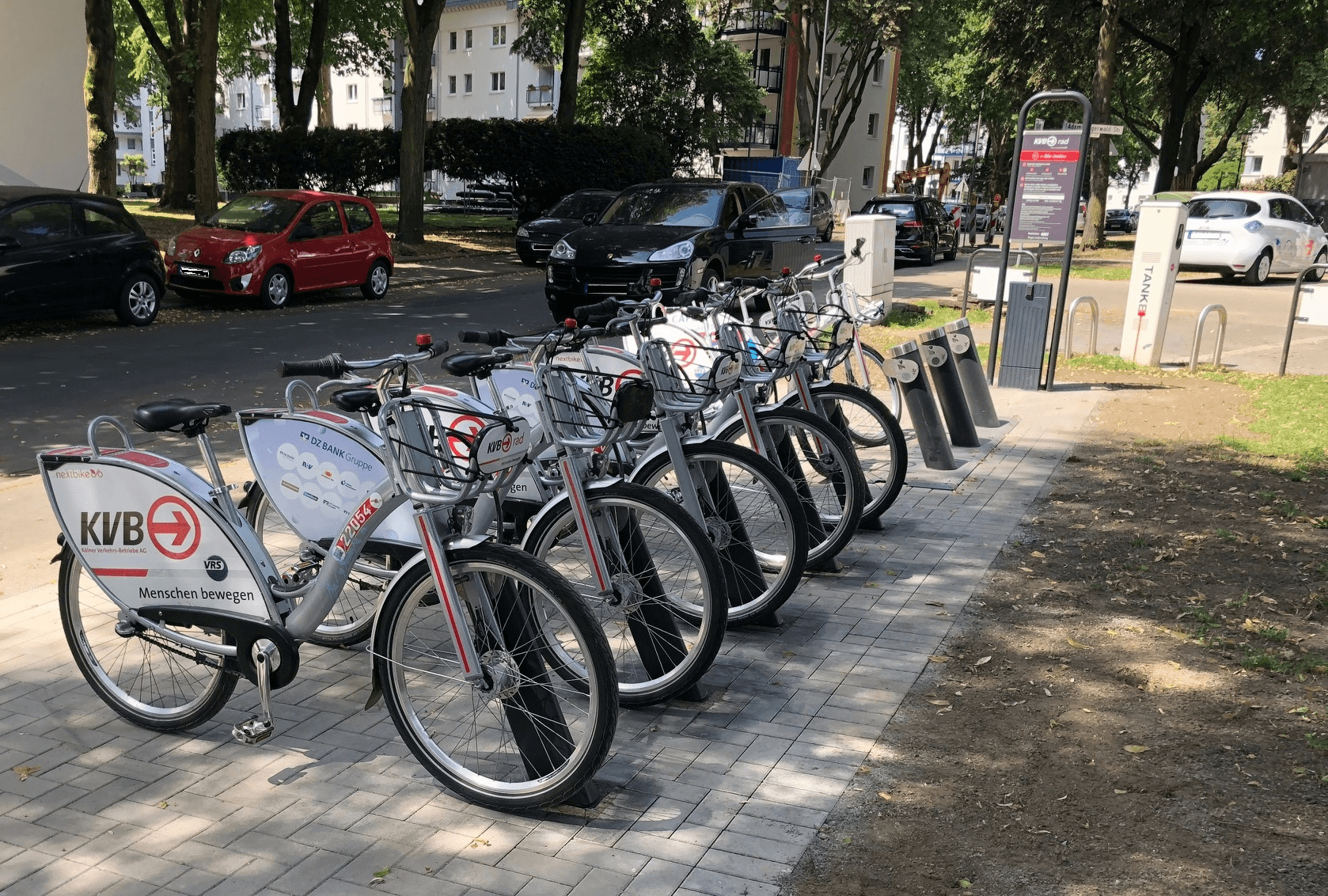In the past five years, the GrowSmarter partners in Cologne have achieved great results in the three different areas of the project: Low Energy Districts, Integrated Infrastructures and Sustainable Urban Mobility. Now we are working hard to ensure upscaling becomes possible in Cologne and that other cities can benefit from our efforts and replicate the smart city solutions we have implemented.
To this effect, we organized several study visits and numerous events to regularly educate groups of visitors from universities and cities from within Germany, Europe and abroad. The partners of GrowSmarter got a first taste of that work, when they visited Cologne for our General Assembly over the summer.
Action Area 1: Low Energy Districts
During the General Assembly we took our partners on a tour to experience our work in Low Energy Districts for themselves. The scene was the GrowSmarter project area Mülheim (Stegerwaldsiedlung), where we have implemented a large-scale energy efficient refurbishment of 16 building blocks to lower their CO2 emissions and upgrade them for our citizens to live in. Noticeable results from this work done by our partners include an average CO2 reduction of 72% in the Stegerwaldsiedlung neighborhood.
Our partner, the German utility RheinEnergie, also installed photovoltaic cells on top of buildings in the neighbourhood, and is exploiting that energy to make the Stegerwaldsiedlung more self-sufficient. In order to achieve this, they implemented the so-called Siedlungsmanagement software which makes it possible to plan energy use in a much more efficient manner through the entire neighbourhood.

Action Area 2: Integrated infrastructures
Under the theme Integrated Infrastructures, we have focused on two different, albeit connected, approaches. On the ground in Cologne, on the so-called “Klimastraße”, which is part of the initiative ‘SmartCity Cologne’ where RheinEnergie tests innovative technologies, the company integrated three electric charging points electric vehicles in lampposts on the street. These three charging points have a yearly loading volume of 14.000 kWh and in one year of implementation they reduced the CO2 emmissions by ten tonnes compared to if the same transportation had been done in regular cars.
The second approach is related to Big Data and the work done by [ui!] - the urban institute with its open urban big data platform called ‘Urban Pulse’. The platform is able to store and process urban data in real-time in order integrate a wide range of different data and services used by Cologne (and other cities when the solution is replicated!). Data can be shared from different departments of a city administration as well as from different utilities or third parties with relevant data. The data platform gives a fast and easy overview of the current situation of the city. Different focal areas such as the environment or traffic can be considered. Three factsheets explaining the different use-cases of the Urban Pulse were recently made and you can find them online at the GrowSmarter website:
Action Area 3: Sustainable Urban Mobility
Finally, we showed our partners visiting from the rest of the GrowSmarter cities some of the implementations we have done to improve Urban mobility in Cologne as part of the project. A centrepiece of this work is the Mobility Stations. A mobility station offers multiple transport alternatives at one location. The mobility stations can vary in both size and type of location, and ten different stations were implemented in or near the neighbourhood of Mülheim. Some offer e-bike and e-car sharing, while others may offer public transportation in connection to parking and the availability of e-bikes.
In total, together with our partners, RheinEnergie, Cambio Cologne, KVB and Ampido, we have deployed 54 different e-vehicles in Cologne (cars and bikes) in the different mobility stations. As mentioned in earlier blogs, the process for signing up for an e-bike is simple. The costumer can sign up for free by using the homepage www.kvb-rad.de, by using the KVB or nextbike App or register on the phone by using the nextbike costumer hotline.

Our partners from KVB and cambio have described their work with the Mobility Station in an independent blog Segment:
Mobility station, e-bikes and the new design guide - by the industrial partners KVB and cambio
Within the project of GrowSmarter, in particular for the mobility stations, all technical requirements e.g. the certifications of safety and quality of the products, have been completed. For the commission of the e-bikes a test called "Inbetriebnahmeprüfung" by the the German Technical Inspection Association was necessary. The KVB is the first company, who realized this test of an e-bike station in Germany.
Since the 8th of Februar all e-bikes are in use. Because of the many unauthorized returns of the e-bikes outside the mobililty stations, the KVB had to develop a new design for the e-bikes to ensure the customers understand the difference between an e-bike and a conventional bike. These difference refer to the pricing system and the regulations of returning and renting the e-bikes.

The Verkehrsverbund Rhein-Sieg developed a new design guide for the signature of mobility stations in Nord Rhine-Westfalia. Together with the city council of Cologne and cambio carsharing a new concept for the pedestrian signs between the light rail- and bus stations and the mobility stations had to be installed.
Furthermore there has been an enourmous sharing and discussion of information and experience especially for the members of WP4 during the general assemblies in Barcelona and Porto. In addition to the GA´s there has been a webinar concerning urban mobility which was presented by Tanya Bullmann (cambio CarSharing) and Thomas Bischof (KVB). There have also been many interviews regarding the GrowSmarter project and the development of smart mobility. These requests from students and universities have been answered from nearly all team members of WP 4.

In order to increase the use of the offered electric car-sharing, cambio started so called „E-Infoveranstaltungen“. These are best described as a meet & greet between cambio staff and customers or car-sharing interested people directly at the mobility stations during weekends. Every weekend, cambio met customers at a different station in order to explain the usage of the electric vehicles and lower the threshold for use. The meetings turned out to be very successful and each was visited by at least 15 up to 50 people. Customers were asking cambio staff questions and exchanged experiences. In the weeks after each current meeting we could see an increased use of e-vehicles at the mobility stations.
 Julia Egenolf
Julia Egenolf
Site Manager, Cologne
For the previous blog post, click here



